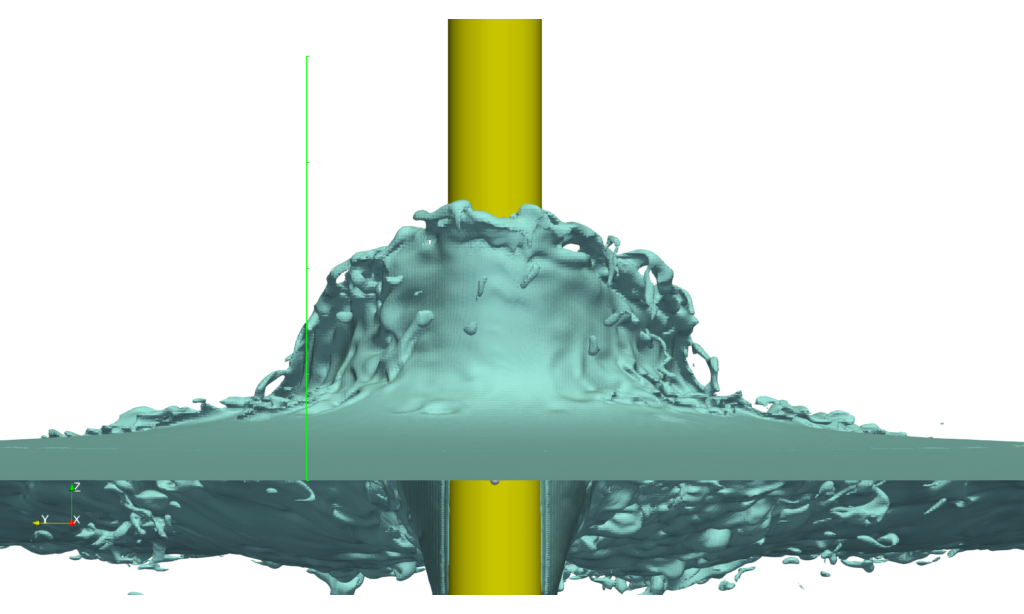Abstract
Computational Fluid Dynamics (CFD) is a useful tool for predicting flow in cases where experimental measurements can be difficult or costly to conduct, such as measuring the wake from a submarine periscope. A circular cylinder can be used as a simple proxy for a periscope moving through the free surface and several studies into the free surface flow around cylinders have been conducted both experimentally and computationally. CFD studies often focus on low Froude number flows, presumably to reduce the computational resource requirements of the simulation. Where higher Froude numbers have been investigated, the measurements are generally presented as mean or snapshot values and so transient fluctuations in the flow are not captured. For the purpose of predicting detectability of a periscope and its wake, it is important that the flow be accurate at snapshots in time and that transient variability be captured in order to predict the resulting variation in detectability over any given period of time.
When predicting the susceptibility of a submarine to above water detection, it is important to consider the impact of the wake generated by the periscope. Computational Fluid Dynamics (CFD) tools can be used to predict the physical size and shape of the wake, which can be combined with periscope models for input into detectability prediction models. For this application, it is important that CFD predictions of the wake are accurate not only in the mean calculations, but that the physical characteristics of the wake are captured at instantaneous snapshots in time.

